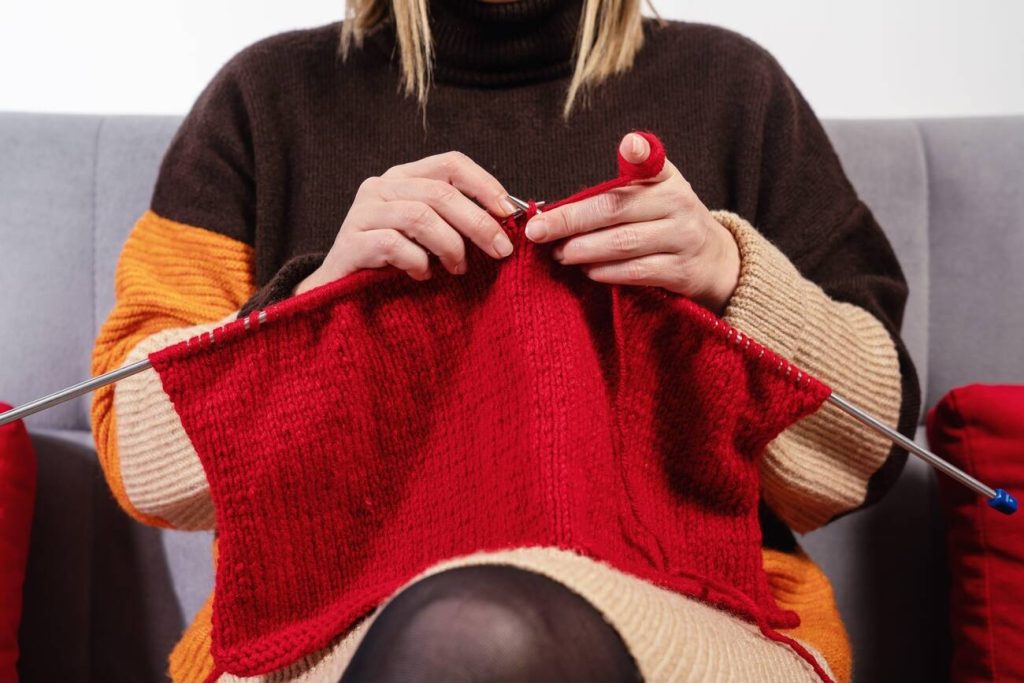Do you ever find yourself tangled in the yarn of confusion, wondering about the two methods of knitting? Well, fear not! In this article, we will unravel the mysteries for you. From the Continental Knitting Method to the English Knitting Method, we’ll guide you through each technique with clarity and ease. So grab your needles and let’s dive into the world of knitting together!
Continental Knitting Method
The Continental knitting method is known for its efficiency and speed. When practicing this technique, focus on maintaining consistent yarn tension to ensure smooth stitching. Keep your needle positioning close to the fabric, allowing for quicker stitch formation. Your hand movement should be fluid and controlled, smoothly working each stitch without unnecessary strain. One of the advantages of Continental knitting is the ability to control your speed effectively; by mastering this skill, you can increase your productivity. Remember to practice regularly to improve your proficiency in yarn tension, needle positioning, stitch formation, hand movement, and speed control while using the Continental knitting method.
English Knitting Method
When you’re using the English knitting method, make sure to hold the working yarn in your right hand. This technique offers a different approach compared to Continental knitting. Here are some key factors to consider when practicing English knitting:
- Knitting tension: Adjust how tightly you pull the yarn through each stitch.
- Yarn choice: Select yarn that complements your project and is comfortable to work with.
- Needle size: Choose needles that match the yarn weight for optimal results.
- Stitch patterns: Experiment with various stitch patterns to create unique textures and designs.
- Casting on: Begin your project by casting on stitches using a method that suits your preference.
Combined Knitting Technique
In combined knitting, you hold the yarn in your left hand for purling and in your right hand for knitting. This technique allows for a unique approach to stitch orientation and needle grip. By mastering the purling technique with this method, you can achieve consistent yarn tension and fluid hand movement while creating beautiful knitted pieces.
| Stitch Orientation | Needle Grip |
|---|---|
| Twisted | Modified |
| Hand Movement | Purling Technique |
|---|---|
| Fluid | Wrapping yarn around needle |
Portuguese Knitting Style
Explore the unique approach of holding the yarn around your neck in Portuguese knitting to efficiently create beautiful stitches. This style offers various advantages like better control over yarn tension, making it easier to maintain consistent stitch sizes. To enhance your experience further, ergonomic knitting needles can help reduce strain on your hands and wrists. Understanding the Portuguese purling technique is crucial for mastering this method, ensuring that you achieve neat and tidy purl stitches in your projects. Delving into the history of Portuguese knitting can provide insights into its origins and evolution over time.
- Portuguese purling technique
- Yarn tension control
- Ergonomic knitting needles
- Portuguese knitting history
Lever or Irish Cottage Knitting
Lever or Irish Cottage knitting utilizes a lever device to facilitate faster and more efficient hand motions while creating stitches. Lever knitting benefits include increased speed due to the lever action, making it a popular choice among knitters looking to work faster. On the other hand, Irish Cottage knitting has a rich history dating back centuries in Ireland, with variations influenced by different regions. The technique of lever knitting involves using a small apparatus that acts as an extension of the needle, allowing for quicker movements. In contrast, Irish Cottage variations can involve different ways of holding yarn and needles based on personal preferences. When comparing Lever vs. Irish Cottage methods, both offer unique advantages depending on your knitting style and desired speed.


